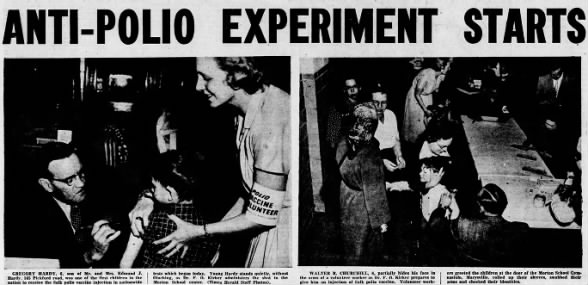

On April 26, 1954, the Salk polio vaccine field trials, involving
1.8 million children, began at the Franklin Sherman Elementary
School in McLean, Virginia.
Children in the United States, Canada and Finland participated
in the trials, which used for the first time the now-standard
double-blind method, whereby neither the patient nor attending
doctor knew if the inoculation was the vaccine or a placebo.
One year later, on April 12, 1955, researchers announced the
vaccine was safe and effective and it quickly became a standard
part of childhood immunizations in America.


Jonas Salk holding bottles of culture he
used to develop the polio vaccine.
Today, polio has been eliminated throughout
much of the world due to the vaccine; but,
there is still no cure for the disease and it
persists in a small number of countries in
Africa and Asia.















![Home [www.pulaskipost.com]](https://th.bing.com/th/id/R.396b5c4c53aae69aa305bb89c2dbdf76?rik=zvPEwc6qCBcn2Q&riu=http%3a%2f%2fwww.pulaskipost.com%2fimages%2fstories%2f2021-Photos%2f1950s_polio_shots.jpg&ehk=siuyMdQ6UFJhIzH4o%2f8mI%2b7YuIZDq4fRQfg5f4zD9CY%3d&risl=&pid=ImgRaw&r=0)

